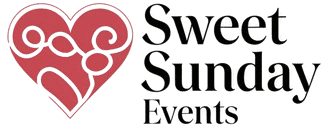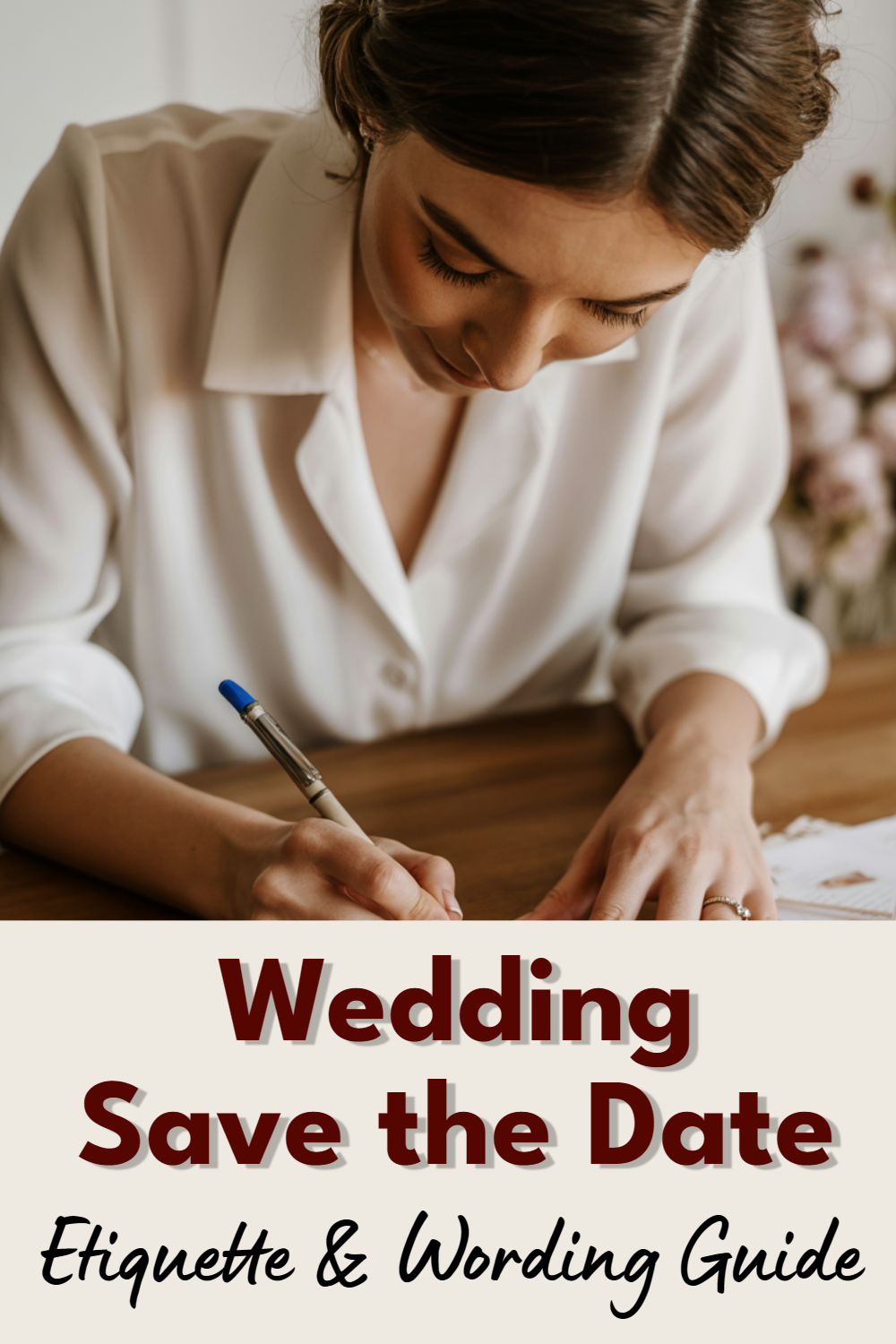Save the dates might seem like simple cards, but they’re actually your wedding’s opening act. Get them right, and you set the tone for everything that follows—mess them up, and you’ll be fielding confused calls from Aunt Martha for months.
The Perfect Timeline for Save the Dates
Your save the date timing can make or break your guest attendance. Too early feels presumptuous, too late leaves people scrambling to rearrange their lives.
For local weddings, six to eight months ahead gives guests plenty of notice without feeling overly eager. This timeline works especially well for Saturday weddings during popular months like May through October.
Destination weddings demand more breathing room—aim for eight to twelve months in advance. Your college roommate needs time to save vacation days and book flights, not panic-buy last-minute tickets at triple the price.
Holiday weekends require the longest lead time of all. Memorial Day or Labor Day weekend weddings should have save the dates out a full year ahead, sometimes more if you’re in a popular destination.
Essential Information to Include
Save the dates walk a fine line between being informative and overwhelming. Too little information leaves guests guessing, too much turns your elegant card into a novel.
- Your names come first, obviously. But consider how formal you want to sound—”Jennifer and Michael” feels different from “Jen and Mike,” and both set distinct expectations for your celebration.
- The wedding date needs to be crystal clear. Spell out the month to avoid any mix-ups between numerical formats, because nobody wants guests showing up on the wrong day.
- Location information depends on your situation. If everyone knows you live in Chicago and you’re getting married there, “Chicago, Illinois” suffices. But if you’re surprising everyone with a destination wedding in Tuscany, more specific details help.
- Website information has become practically mandatory. Your wedding website handles the heavy lifting of details, directions, and accommodation suggestions that don’t belong on a save the date.
Wording That Actually Works
Traditional wording follows predictable patterns, but predictable doesn’t mean boring. Classic phrases like “Save the Date” or “Please join us” never go out of style because they’re clear and elegant.
“Sarah and James request the pleasure of your company” feels formal and sophisticated. This works beautifully for black-tie affairs or traditional church ceremonies where elegance matters most.
“Save the date! Emma and David are getting married” strikes a casual, friendly tone. Perfect for couples who want their celebration to feel relaxed and approachable from the very beginning.
Playful wording can reflect your personality without sacrificing clarity. “Mark your calendars—Lisa and Tom are tying the knot!” sounds fun while still conveying all necessary information.
Avoid inside jokes or overly cute phrases that might confuse older relatives or distant friends. Your college buddies might understand your reference, but your grandmother probably won’t.
Different Styles for Different Couples
Formal couples often prefer traditional language and classic layouts. Think elegant fonts, proper grammar, and time-tested phrases that won’t feel dated in twenty years.
“Mr. and Mrs. Johnson request the honor of your presence at the marriage of their daughter Katherine to William Thompson” works when parents are hosting or when formality matters to your families.
Casual couples can embrace more relaxed language while still being informative. “We’re getting married! Join Katie and Will for the celebration” feels warm and inviting without stuffing.
Creative couples might play with format entirely. Save the date magnets, postcards, or even small gifts can work, but remember that functionality matters more than novelty.
Addressing Etiquette That Matters
Addressing save the dates properly prevents hurt feelings and awkward conversations later. Your addressing choices signal who’s actually invited to the wedding itself.
Single guests receive their own save the date with just their name. Don’t add “and guest” unless you’re genuinely offering a plus-one, because this creates expectations you might not want to fulfill.
Married couples always get addressed together, even if you’re only close with one person. “Mr. and Mrs. David Chen” or “Sarah and David Chen” both work, depending on your formality level.
Families with children need careful consideration. If kids are invited, address the save the date to the whole family. If it’s adults-only, address only the parents—this sends a clear message about your intentions.
Unmarried couples living together should both be named on the save the date if both are invited. “Ms. Rachel Green and Mr. Ross Geller” makes it clear you’re inviting them as a couple.
Digital vs. Physical Save the Dates
Digital save the dates have gained acceptance, especially post-pandemic, but they’re not always the right choice. Consider your guest list and your own preferences before deciding.
Email save the dates work well for tech-savvy crowds and destination weddings where quick communication matters. They’re also budget-friendly and environmentally conscious, which appeals to many modern couples.
Physical save the dates still carry more weight with older generations and feel more special in your guests’ hands. They’re also harder to accidentally delete or lose in spam folders.
Hybrid approaches let you use both methods strategically. Send physical save the dates to grandparents and older relatives while using email for friends who live on their phones.
Common Mistakes That Create Problems
- Including too much detail turns your save the date into a preliminary invitation. Registry information, dress codes, and meal choices don’t belong here—save those details for your actual invitation.
- Sending save the dates to people you’re not sure you’ll invite creates serious etiquette problems. Every person who receives a save the date expects a wedding invitation to follow.
- Forgetting to proofread seems obvious, but it happens more than you’d think. Typos in dates or locations can cause genuine confusion and missed celebrations.
- Mismatched formality between your save the date and wedding style confuses guests about what to expect. Ultra-casual save the dates followed by black-tie invitations leave people wondering what you actually want.
Special Circumstances and Solutions
Postponed weddings require delicate handling of save the date communications. If you’ve already sent save the dates and need to change plans, follow up quickly with updated information.
“Change of plans! Sarah and Mike’s wedding is now September 15th” acknowledges the change without over-explaining circumstances that might be personal or complicated.
Elopement announcements aren’t technically save the dates, but they serve a similar communication function. “We did it! Sarah and Mike were married June 10th in Maui” shares your joy without making anyone feel excluded.
Multiple celebrations might need multiple save the dates. If you’re having a destination ceremony followed by a hometown reception, be clear about which events people are invited to attend.
Budget-Friendly Options That Don’t Look Cheap
- Postcard save the dates cost less to mail and often less to print while still looking sophisticated. Choose quality cardstock and clean design to maintain elegance on a budget.
- Online printing services offer professional results at fraction of traditional stationer costs. Just be sure to order samples first—colors and paper quality can vary significantly between companies.
- DIY save the dates can look beautiful if you have design skills and plenty of time. But be realistic about your abilities and timeline—this isn’t the place to learn graphic design under pressure.
- Simple designs often photograph better and age more gracefully than elaborate ones. Clean fonts and classic layouts cost the same as busy designs but deliver better long-term results.
Making Your Save the Dates Memorable
Personal photos add warmth and help guests connect with your celebration before it happens. Engagement photos work perfectly, but any photo that captures your relationship works well.
Unique formats like magnets or bookmarks give your save the date staying power on refrigerators or in books. Just ensure the format doesn’t compromise the essential information.
Local themes can work beautifully for destination weddings. A save the date that hints at your Napa Valley location or beach ceremony builds excitement while providing useful context.
Quality materials make a difference in how your save the dates are received and remembered. Slightly heavier cardstock or a subtle finish elevates even simple designs.
Final Thoughts on Save the Date Success
Save the dates set expectations for your entire wedding experience, so choose your words and style thoughtfully. They’re your guests’ first glimpse into what you’re planning, and first impressions matter.
The best save the dates feel authentically like you while serving their practical purpose flawlessly. Don’t sacrifice clarity for creativity, but don’t be afraid to let your personality shine through either.


